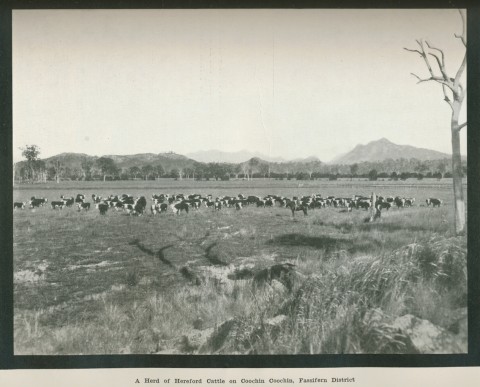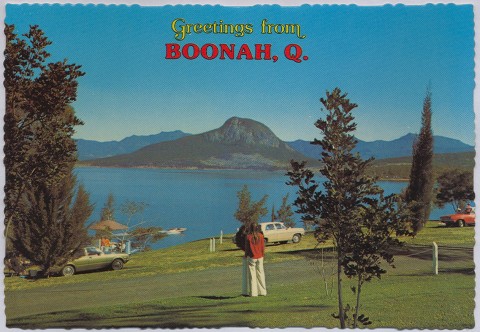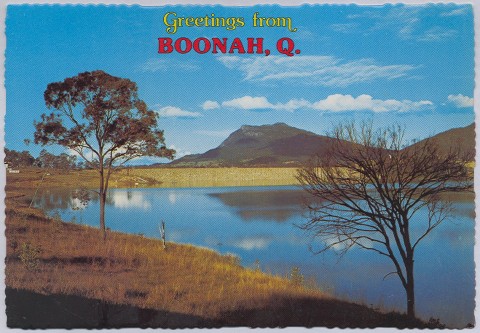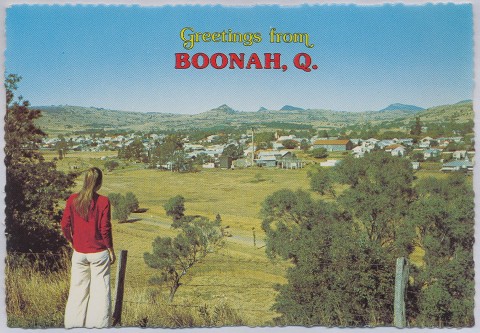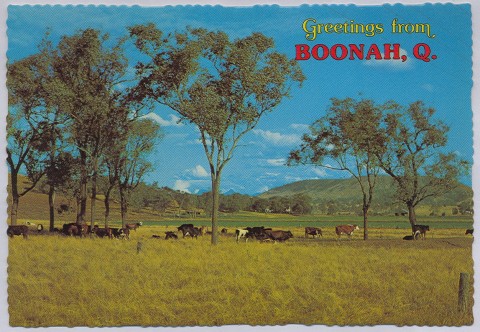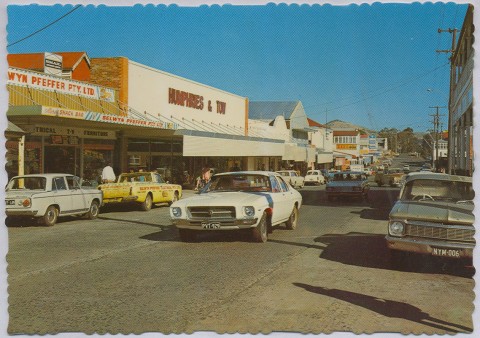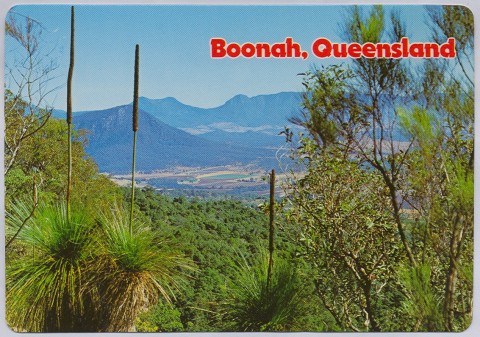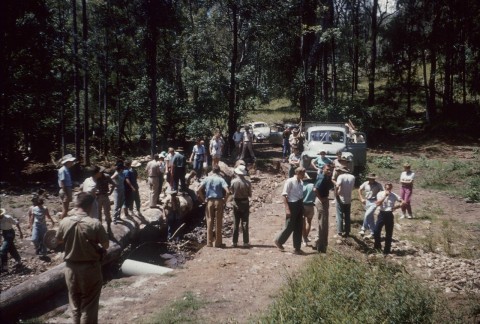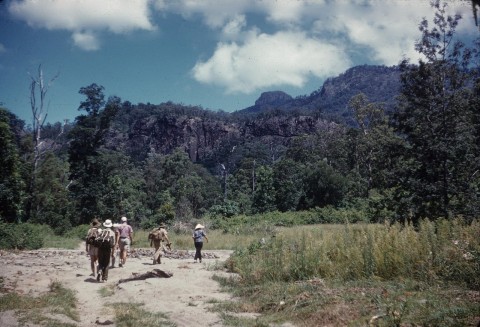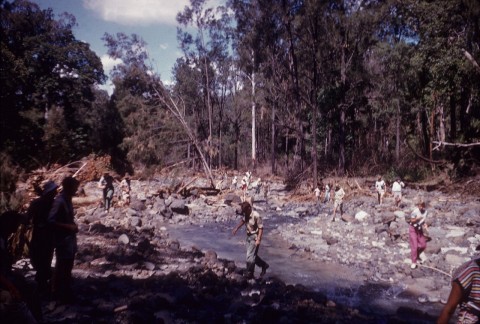Boonah, a rural town, is 70 km south-west of Brisbane. To its south and west are the scenic rim of mountain ranges and Cunninghams Gap. The scenery has been characterised as 'Switzerland without the snow'.
First known as Blumbergville (after the Blumberg Brothers' stores opened in 1882) and Dugandan, the town was named Boonah in 1887 when the railway station was opened. It is thought that the name was derived from an Aboriginal word describing the bloodwood tree or a brigalow-type acacia.
The town began near the boundary between two pastoral runs, Duganden and Coochin Coochin, which were taken up in 1844. Closer-settlement farm selections in the Boonah district began in the early 1870s. A notable but slightly later example was a German settlement at Templin, 3 km north-west of Boonah, which has become an historical village preserved by the Fassifern District Historical Society (Boonah).
By the late 1880s Boonah's importance was evident. There was a Lutheran church (1882, at nearby Hoya), a Catholic church (1887) and a Methodist church (1883, at nearby Durangan). The Goolman local government division's offices were moved from Flinders to Boonah in 1888, the year after extension of the railway from Ipswich. By the year of federation Boonah had a hospital (1900), an Anglican church, a Salvation Army chapel and a Church of Christ. The Fassifern Butter Factory opened in 1901 (running until 1974) and the Fassifern and Duganden Pastoral Association held its first show at Boonah in 1898. The Butter Factory's period of operation witnessed the changing land uses: from scrub clearing and maize crops to dairying and pigs, and to the replacement of dairying by irrigated horticulture, particularly potatoes. Fodder cropping was significant, especially during the dairy era.
A school of arts was opened in 1893 and a second, larger one in 1912.
Boonah was described in the 1903 Australian handbook:

Rosa Praed in My Australian childhood (1902) described the original school of arts as 'toy-box architecture', and Boonah generally as a bush township with German farmers in buggies, pig drovers and bullock drivers. The schools of arts were redeveloped for a library and cultural centre in 1984, incorporating RSL land. The war memorial and its park setting are listed in the Queensland heritage register.
Boonah is on the Teviot Brook, which inspired the name of the Teviot picture theatre (1941), a popular venue also incorporated in the cultural centre development.
Boonah's population grew steadily until the 1960s. The Catholic community opened a primary school in 1957 and the add-on secondary department to the State primary school (1878) was replaced with a new State high school in 1965. The offices of Goolman shire and Boonah shire (1937-2008, see separate entry) were in Boonah.
In addition to the facilities already mentioned, Boonah has three hotels, a swimming pool, golf club, bowling club, retirement village, a sports centre, a Council art gallery and a showground. The local newspaper is the Fassifern Guardian, first published in 1905. An airstrip was opened in 1978, 14 years after the railway closed. An annual Fassifern German Festival is held.
The town's cultural centre was redeveloped in 2003 incorporating the art gallery, shire library and multimedia centre. The Blumbergville Clock, made from recovered and donated farm equipment, was installed in the Boonah town centre in 2014. The clock is both an artwork and timepiece and was made as part of the town's recovery from the 2011 and 2013 floods in the region.
Boonah's census populations have been:
| Census Date | Population |
|---|---|
| 1891 | 144 |
| 1901 | 391 |
| 1911 | 908 |
| 1947 | 1323 |
| 1966 | 2041 |
| 1981 | 2040 |
| 1991 | 2100 |
| 2001 | 2185 |
| 2006 | 2114 |
| 2011 | 2520 |
Angela Collyer, ed, All Saints Catholic Church 1887-1987, Boonah, All Saints Parish Centenary Committee, 1987
Murray Johnson and Kay Saunders, Working the land, Runcorn, Queensland State Archives, 2007
C.K. Pfeffer, The Fassifern story: history of Boonah Shire and surroundings to 1989, Boonah, Boonah Shire Council, 1991
